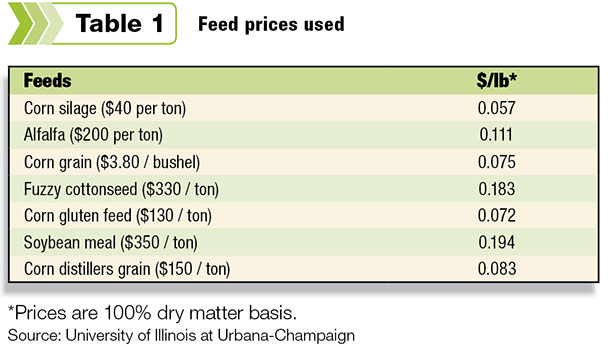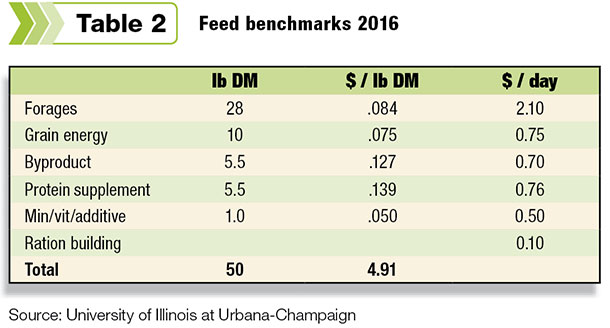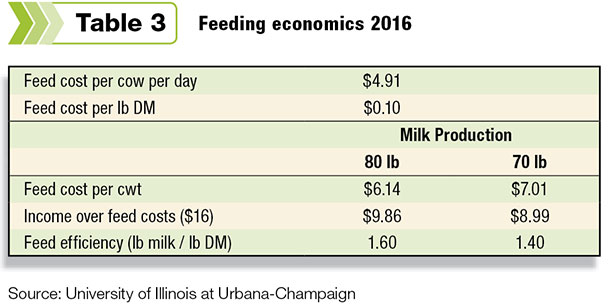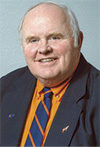Dairy farmers are facing a financial challenge as milk prices have dropped more than 40 percent since 2014. Future milk price increases may be several months away with excess milk production from the European Union, New Zealand and the United States, low oil prices limiting several countries from buying dairy products and Russia’s import ban.
The bottom line is too much milk is being produced and too much dairy product is going into storage that will drag down future prices.
Feed costs represent 50 to 60 percent of the total cost of producing milk on the dairy farm. Forages may be raised on dairy farms, which can contribute 50 to 60 percent of the ration dry matter and is controlled by the farm. Feed prices continue to shift based on weather conditions, harvest delay and export markets.
Corn prices increased in late spring 2016, which raised the price of energy feed ingredients while soybean prices increased (due to South American harvest challenges and China’s increasing demand for soybean meal and soybeans). To address low profit margins, dairy farmers are considering changes in their feeding programs. Four feeding pillars or strategies are listed below for long-term solutions:
Pillar one: Never give up milk
The first 13 pounds of dry matter every day is required to meet a Holstein’s maintenance requirements for energy. As milk production increases, the percent of energy used for milk production increases, diluting out maintenance requirements.
High-producing cows convert 1 pound of marginal dry matter (the last pound consumed) to 2 pounds of additional marginal milk (last 2 pounds produced). With current milk prices ($0.15 a pound) and feed cost ($0.10 per pound of dry matter, Table 1), an additional $0.20 of added income is earned per day (maintenance requirements have been met earlier).
 Extending cow longevity (more lactations in the herd) results in mature cows reaching higher levels of milk as these older cows reach their mature equivalence, representing 20 pounds more milk per day per cow with higher peak yields and lactation curves.
Extending cow longevity (more lactations in the herd) results in mature cows reaching higher levels of milk as these older cows reach their mature equivalence, representing 20 pounds more milk per day per cow with higher peak yields and lactation curves.
Goals to reduce culling and gain more mature cows include reducing lameness, getting cows pregnant and minimizing mastitis risk. These three areas lead to major culling of cows in dry herds.
Adding more milk per cow can be achieved by shifting to 3X-milking and using rBST (if allowed). As more marginal milk is produced, maintenance requirements are diluted. Both strategies require higher dry matter intake to support higher milk production. Forage quality, feed bunk management and cow comfort are key management factors to increase dry matter intake.
Pillar two: Build your milk check based on more value per cwt
Producing milk lower in somatic cell counts can increase the value $0.30 to $0.50 per 100 pounds (cwt) especially for milk converted to cheese, as more cheese is produced per cwt. A quality premium based on lower bacteria count can add $0.80 per cwt paid by milk processors for higher-quality milk, which extends shelf life.
Higher levels of milk fat percentage can add $0.20 to $0.30 per cwt as more butter can be produced, which has higher market value. Higher levels of milk protein percentages can add $0.15 to $0.25 per cwt, increasing cheese yield. In some markets, processors pay a premium for semi-load quantities of milk or distance to processing plant.
Finally, some markets pay a premium for not using rBST (in Illinois this varies from $0.45 to $0.54 per cwt).
Pillar three: Evaluate feed additives and rumen-protected nutrients
Rumen inert fats and oils can be added in rations needing additional energy, but the cost can be high and must be evaluated. Rumen-protected amino acids can increase milk yield and milk protein in high-producing cows at a cost of $0.02 to $0.03 per gram of amino acid added.
Economics should be evaluated. The following feed additives are recommended for various stages of gestation and lactation:
- For high-producing cows, consider monensin, silage inoculants, organic trace minerals, yeast products, buffers and biotin.
- For close-up dry cows, consider monensin, organic trace minerals plus chromium, yeast products, anionic products for negative DCAD and silage inoculants.
- For fresh cows, consider monensin, buffers, yeast products, buffers, organic trace minerals plus chromium, biotin, silage inoculants, calcium boluses and rumen-protected choline.
Consider niacin (rumen-protected and unprotected sources), mycotoxin binders, propylene glycol and propionic acid to stabilize TMR in feedbunks during summer as determined by challenges and opportunities in your herd.
Pillar four: Measure feed economic benchmarks
Several benchmark feeding values can be calculated on your dairy farm. Guidelines for Midwest dairy farms are listed in Table 2.

Feed cost per pound of ration dry matter ($0.10 to $0.12 per pound of ration dry matter, Table 3) reflects feed ingredient selection and levels of inclusion in your ration.

Feed cost per cwt of milk ($6 to $7 per pound) reflects milk yield, shrink, dry matter intake and feed costs.
Income over feed costs ($8 to $9 per cow per day) reflects today’s market price of milk (you have no control on this phase) and your cost to produce 100 pounds of milk (you have some control on this value). Some consultants adjust this value to maintain a constant milk price to remove the impact of market price shifts.
Feed efficiency (over 1.5 pounds of 3 percent test milk per pound of dry matter consumed) reflects the efficiency of converting feed to milk, which is a key value used by all other livestock industries.
Major factors that impact feed efficiency include forage quality, feed digestibility, getting cows pregnant (resulting in more cows in early phases of lactation), low somatic cell counts, increasing milk yield and reducing the risk of acidosis.
Evaluate byproduct feeds based on the value of nutrients contained (corn gluten feed, corn distillers grain, hominy, wheat midds and soy hulls are economical in the Midwest). High corn silage-based rations are typically less expensive than legume-grass based feeding programs. PD

-
Michael F. Hutjens
- Professor of Animal Sciences Emeritus
- University of Illinois – Urbana
- Email Michael F. Hutjens






